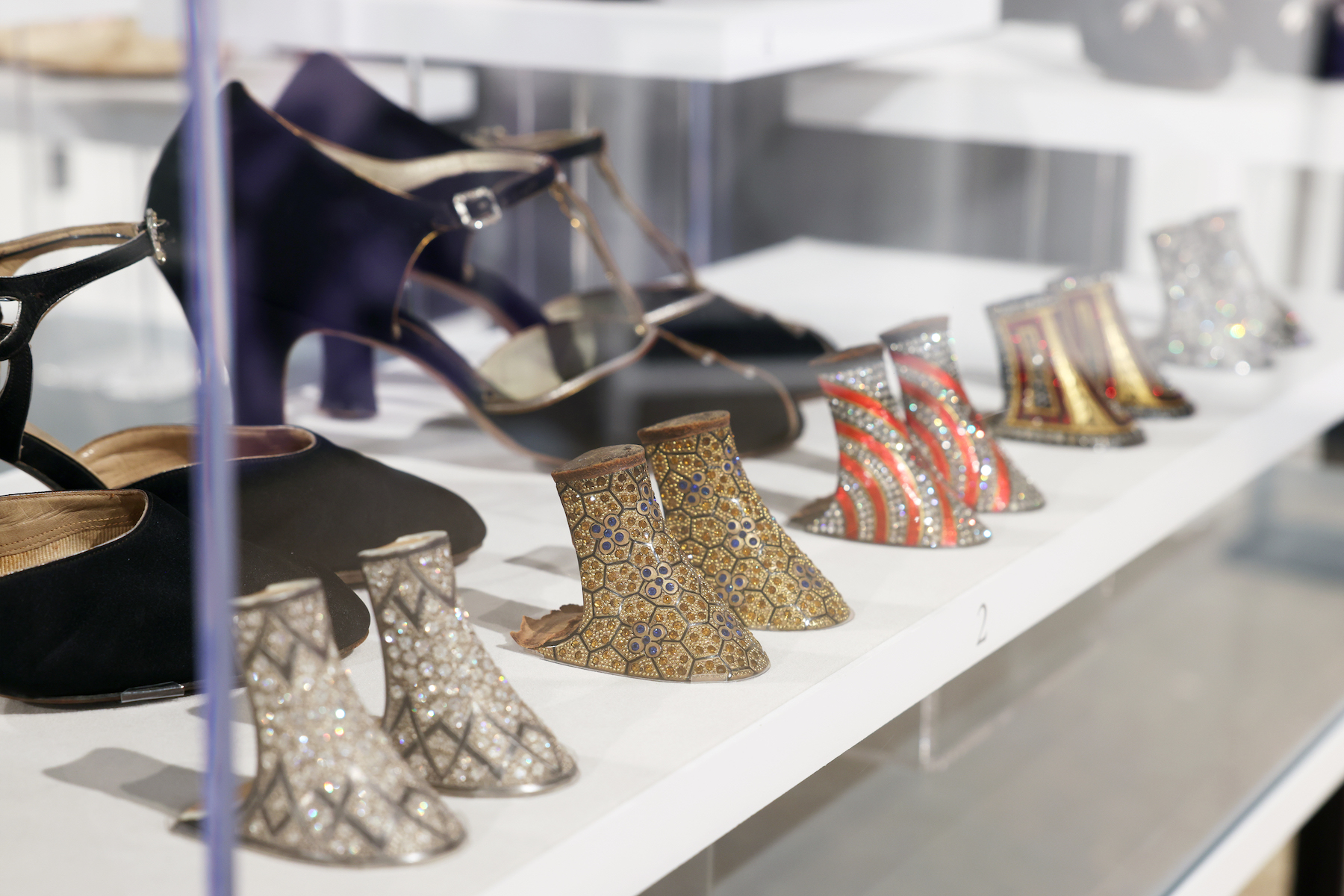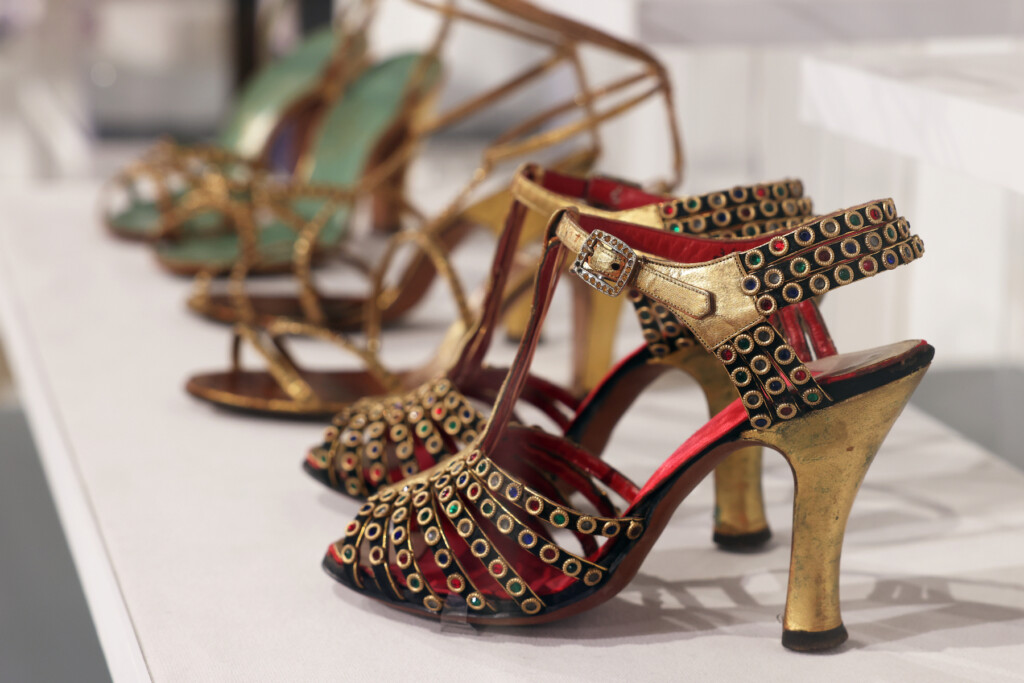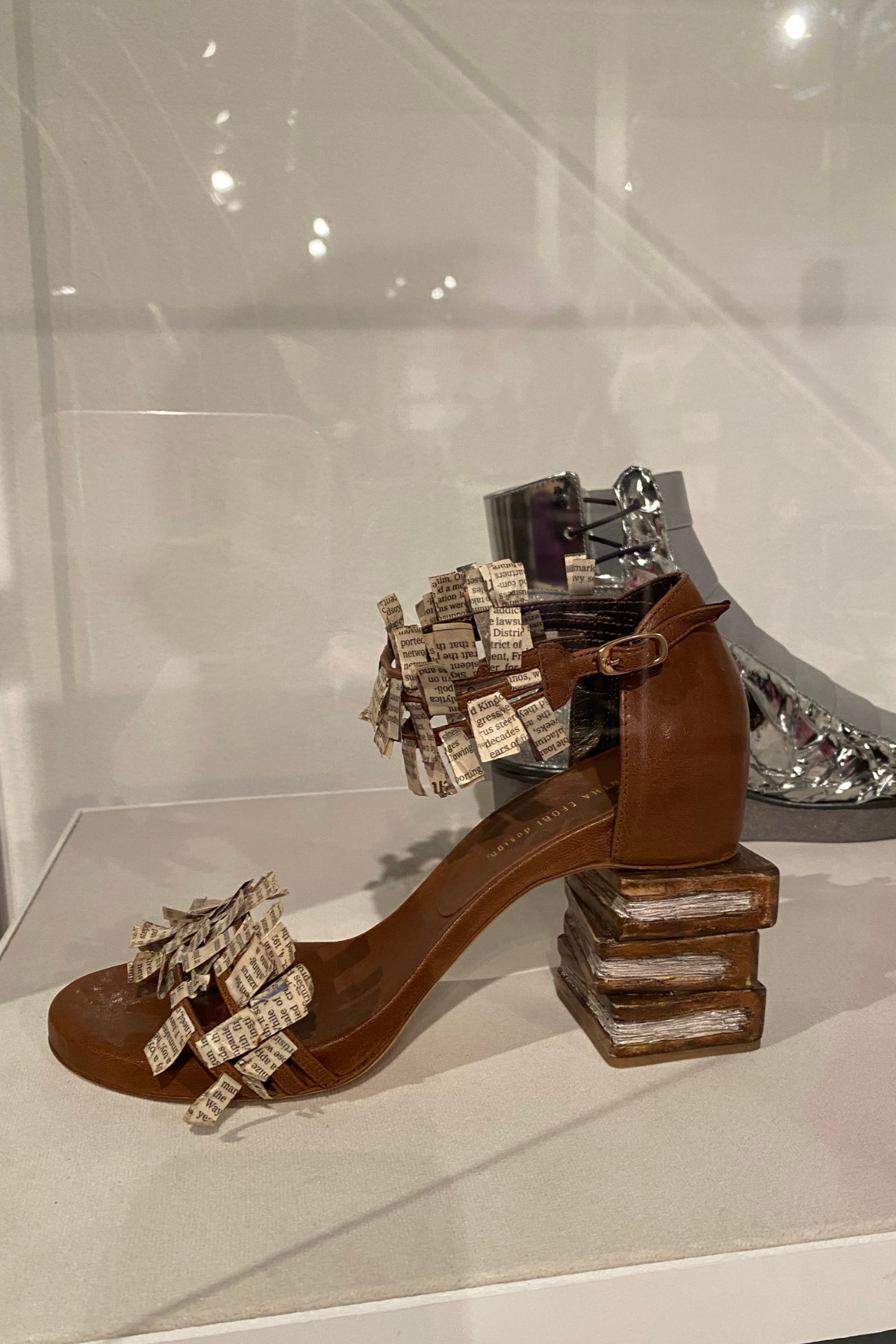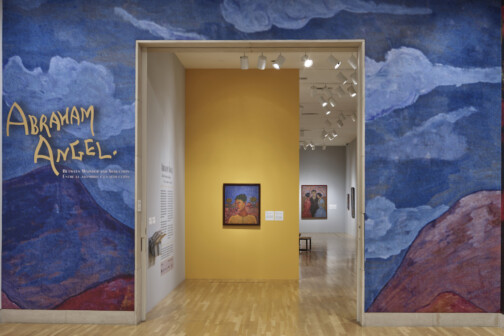After closing time Thursday evening, hundreds crowded into the Dallas Holocaust and Human Rights Museum for the center’s latest special exhibition opening. Some stayed in the lobby, chatting at cocktail tables while sipping wine, but most stepped through a glass door near the gift shop to get a first glance at “Walk This Way: Footwear from the Stuart Weitzman Collection of Historic Shoes.”
On display through July 14, the exhibition features more than 100 historical women’s stilettos, slippers, mules, and more from the private collection of designer Stuart Weitzman. The exhibition hall was packed Thursday, as men and women shuffled in a lazy circle past glass display cases of sparkling high heels, leather boots, and satin flats.
The shoes are the stars, and they tell a much larger story than fashion. “The exhibition uses the shoes to really explore the evolution of women’s rights in history, particularly in the United States,” says Mary Pat Higgins, the museum’s president and CEO.
The exhibition includes displays on Hollywood’s influences on fashion, early drag history, and the role slavery played in shoe manufacturing. There is information on influential designers, like the “first lady of shoes,” Beth Levine, and examples of how department stores were safe places for women to visit without a “chaperone” in the early 20th century. Women’s suffrage is highlighted, and as well as the struggle with poll taxes, which often blocked women of color from voting. (Dallasite Juanita Craft makes an appearance here.) While there is information on some Weitzman shoes, the designer himself is not the story.


Stuart Weitzman learned shoemaking in his father’s Massachusetts shoe factory. The younger Weitzman founded his eponymous fashion house in 1986. He retired in 2017, and the following year, the New-York Historical Society put together “Walk This Way” from the personal collection belonging to the luxury designer and his wife, Jane Gershon Weitzman. There are shoes from the Paris Universal Exposition of 1867, heels produced in Seymour’s factory, pumps signed by the 1947 New York Yankees baseball team (supposedly for Joe DiMaggio’s girlfriend), and more. First displayed in New York City in 2018, the exhibition has been traveling since 2020. Dallas is its sixth stop, crossing the Atlantic from its last location in northwest Spain.
The Dallas Holocaust and Human Rights Museum had previously worked with New-York Historical Society last year to showcase another exhibition, “Black Citizenship in the Age of Jim Crow,” which was on view through December 2023. The museum hosts two special exhibitions a year. With each, they pick a topic already discussed in the museum’s “Pivot to America” permanent wing, which covers various civil rights movements. The traveling exhibits are an opportunity “to do a little bit more of a deep dive into a very specific history” on that topic, Higgins says. The museum hadn’t presented a special exhibition on women before.
Like other artifacts, fashion is a tangible display of history, Higgins says. What people wore throughout history says a lot about the societal norms of the times that “mirrors the values and beliefs and customs of a specific era.”
Many of the oldest shoes in the collection are more utilitarian in style. But as the collection progresses through the 1800s, the footwear becomes more stylish. After the 19th century’s Industrial Revolution, shoes became more affordable, Higgins says, and women could afford more shoes through which they could express themselves. As hemlines rose in the 1920s with the rise of flapper girls, the shoes become more ornate, complete with button fastenings that kept them attached while dancing to jazz.
Museum members and guests got to take a deeper look at this history as they packed into the 250-seat Cinemark Theater on Thursday night. There, historians Jessica Brannon-Wranosky and Christy Crutsinger gave brief lectures on the history (and myths) of women’s suffrage in the U.S. and its fashions, then sat down for a panel discussion with CBS Texas reporter Robbie Owens. After the event, visitors got to head back into the special exhibition and examine the shoes, armed with new context.
Near the end of the exhibition is Higgins’ favorite display: a cluster of three pairs of shoes, designed by high school students in a 2018 Stuart Weitzman and New-York Historical Society-sponsored competition. She’s drawn to one in particular: “Empowerment,” designed by Samantha Efobi. Its heel is made from a stack of books, and it has excepts pasted onto the straps, to represent how women are uplifted through education.
This message underscores the museum’s mission and goal to educate, Higgins says. “By learning history, we are empowered to change our behavior, and stand up against prejudice, hatred, and indifference.”
“Walk This Way” is on view Feb. 9 to July 14. Learn more here.
Author








